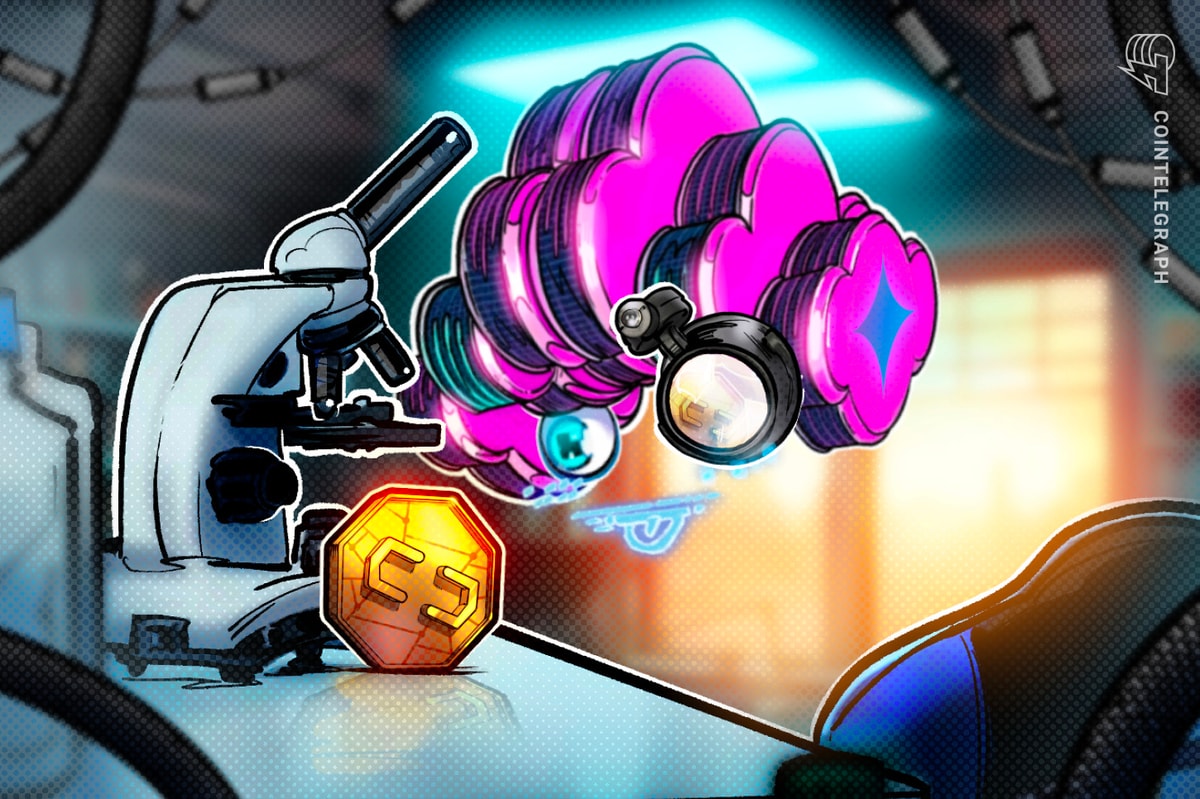How to Use Google Gemini to Analyze Crypto Coins Before Investing
Key takeaways
-
Gemini is a research assistant for summarizing data and analyzing text, not a financial adviser for predicting prices.
-
The quality of your research output depends entirely on the specificity and structure of your prompts.
-
A repeatable workflow involves deconstructing a project’s fundamentals, analyzing its economics and mapping its competitive landscape.
-
Always verify AI-generated information with primary sources like official websites, white papers and blockchain explorers.
-
Proper setup and operational security are crucial, especially when using API keys to connect to external data.
The cryptocurrency market can feel overwhelming. White papers, complex tokenomics and endless social chatter create a flood of information. The challenge for investors isn’t finding data; it’s figuring out what actually matters. That’s where Google’s Gemini can help. As a language model, it makes the noise easier to filter and the insights easier to use.
What can Gemini do for crypto research?
The primary role of Gemini in an investor’s toolkit is to serve as a co-pilot, helping process and structure large volumes of information so the focus stays on higher-level analysis and decision-making. This isn’t about replacing human intellect with artificial intelligence, but augmenting it. Mastering the technology can provide an edge, turning the challenge of information overload into a strategic opportunity.
It’s important to remember, however, that Gemini is not a real-time price oracle, a financial adviser or a substitute for independent verification. Its strength lies in analysis and synthesis, not prediction or absolute accuracy.
How to research a cryptocurrency with Gemini
The utility of a tool like Gemini is unlocked not through casual questions but through a structured and methodical line of inquiry. Generic prompts lead to generic results. The key is to guide the model with precise, contextual instructions — treating it like a specialist — so that an ordinary prompt-and-response exchange produces more structured and actionable insights.
-
Assign a role: Begin prompts with a directive like “Act as a senior blockchain analyst…” or “Act as a venture capital associate specializing in decentralized finance…” to frame the context for a more specialized response. This encourages the model to simulate a more specific domain of expertise in its responses.
-
Request a format: Specify the output structure for clarity. Asking Gemini to “Create a comparison matrix in a markdown table” or to “Draft a SWOT analysis of this project” makes the information easier to digest and compare than leaving it as an unstructured block of text.
-
Iterate and refine: Treat the first response as a starting point. Effective research with Gemini works as a dialogue. For example, if it lists competitors, a useful follow-up could be, “Based on the competitive analysis you just provided, what is the single most significant defensible moat for this project?” This iterative approach enables a progressively deeper understanding.
Part 1: Deconstructing the project’s fundamentals
The first phase of any serious asset analysis is a deep dive into the project’s fundamental design. This involves deconstructing its core technology, understanding the economic incentives that govern its native token and investigating the team building it. Let’s consider a well-known project: Solana, a high-performance layer-1 blockchain focused on supporting decentralized applications and Web3 solutions.
“Act as a blockchain engineer. In no more than 5 concise bullet points, summarize the Solana white paper with emphasis on its Proof-of-History + Proof-of-Stake consensus mechanism. Highlight how it differs from traditional monolithic Layer 1 blockchains.”
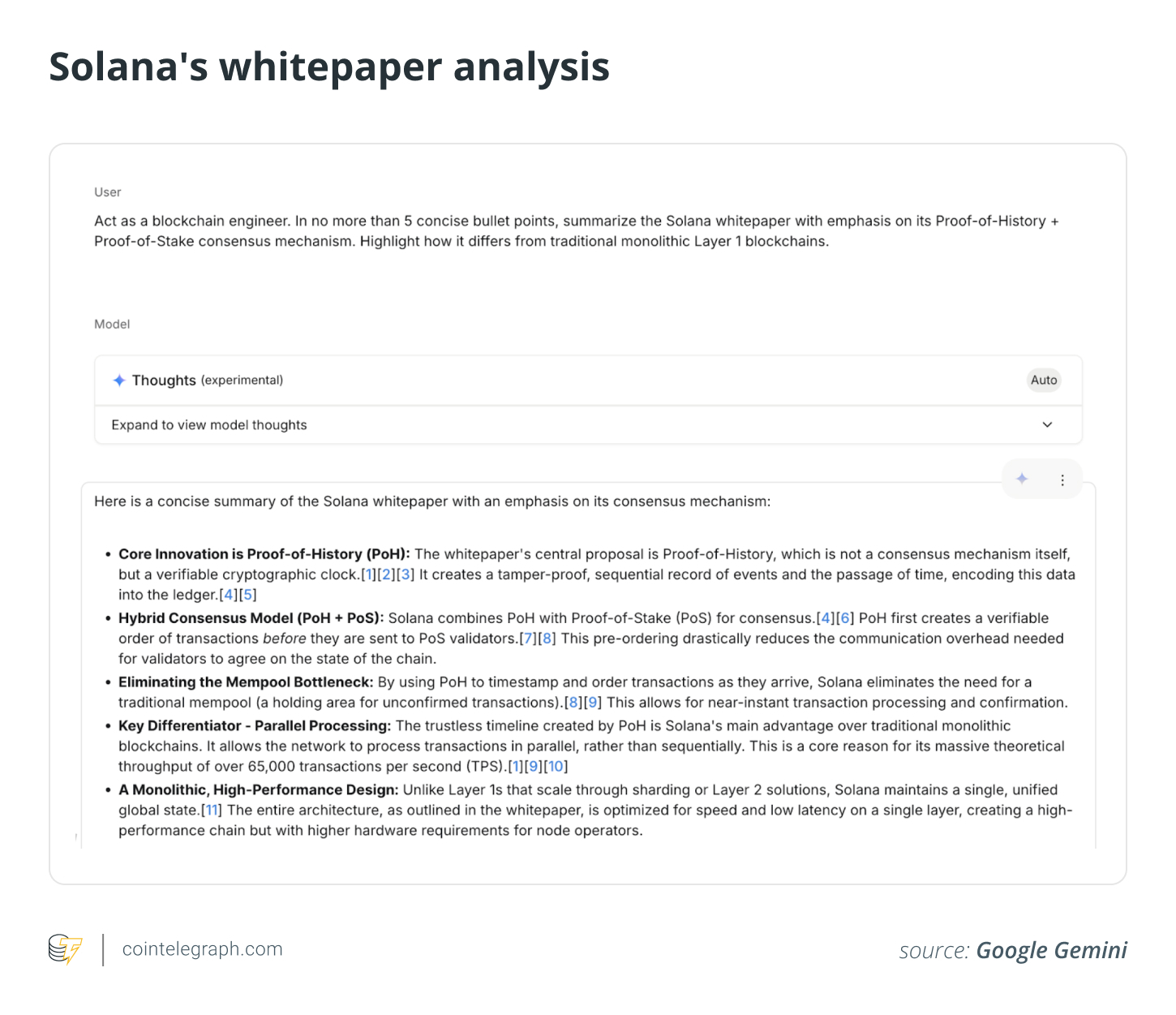
-
Dissecting tokenomicsThe economic model of a token is a critical determinant of its long-term viability. Gemini can help surface potential red flags, such as overly aggressive vesting schedules or a lack of clear utility. A precise prompt for this analysis could be:
“Act as a blockchain tokenomics analyst. Provide a concise analysis (max 6 bullet points) of Solana (SOL) token. Summarize token allocation (team, private & seed/strategic investors, community, foundation), outline vesting schedules and unlock timelines, highlight value accrual mechanisms (staking, inflation, fee burns), and estimate the initial circulating supply based on these data.”
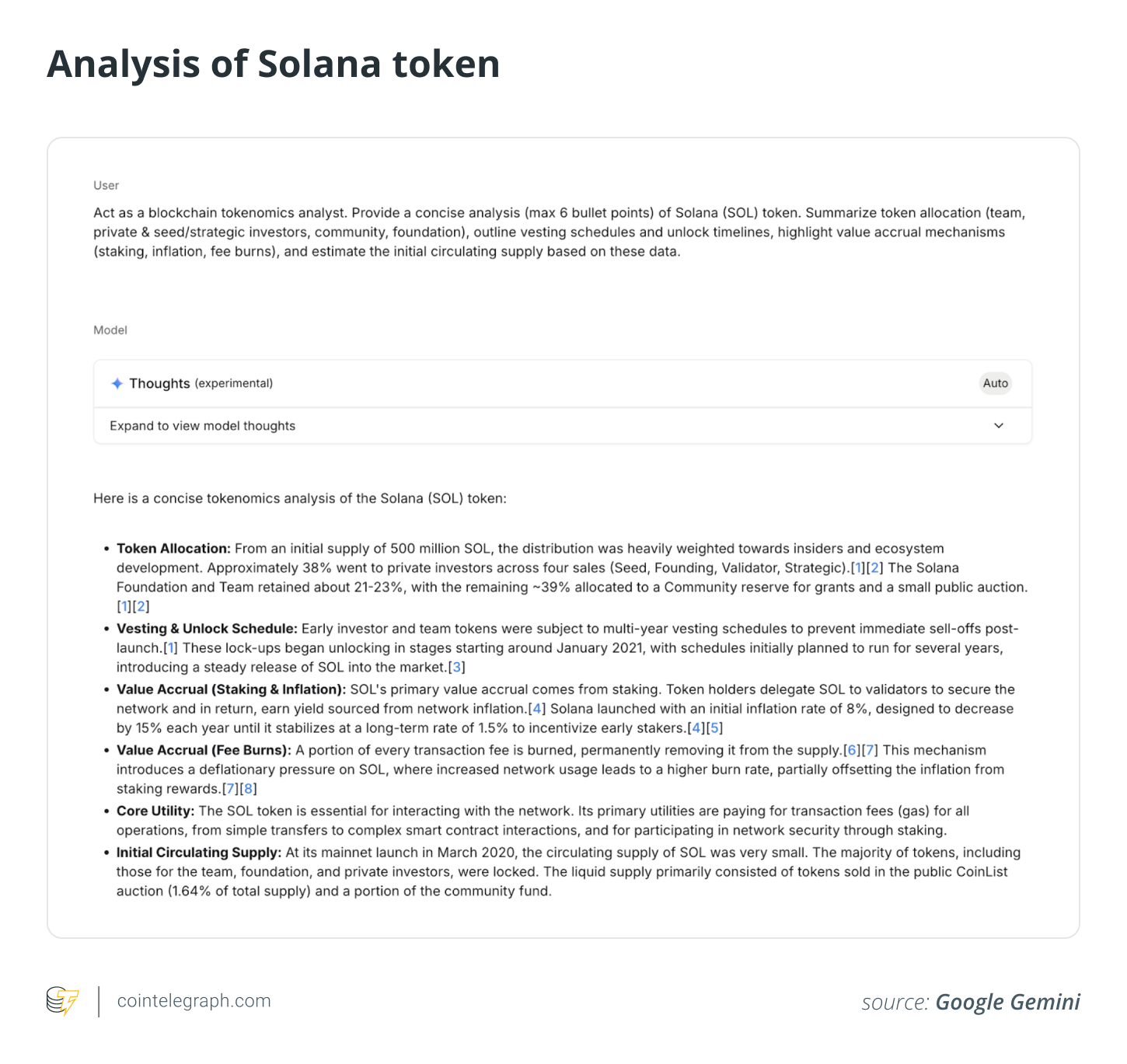
“Act as a Web3 researcher. Provide a concise summary (max 5 bullet points) on the Solana founding team’s relevant Web3 experience, identify the lead investors from seed and Series A rounds and highlight other notable crypto projects in their portfolios. Keep the response factual and brief.”
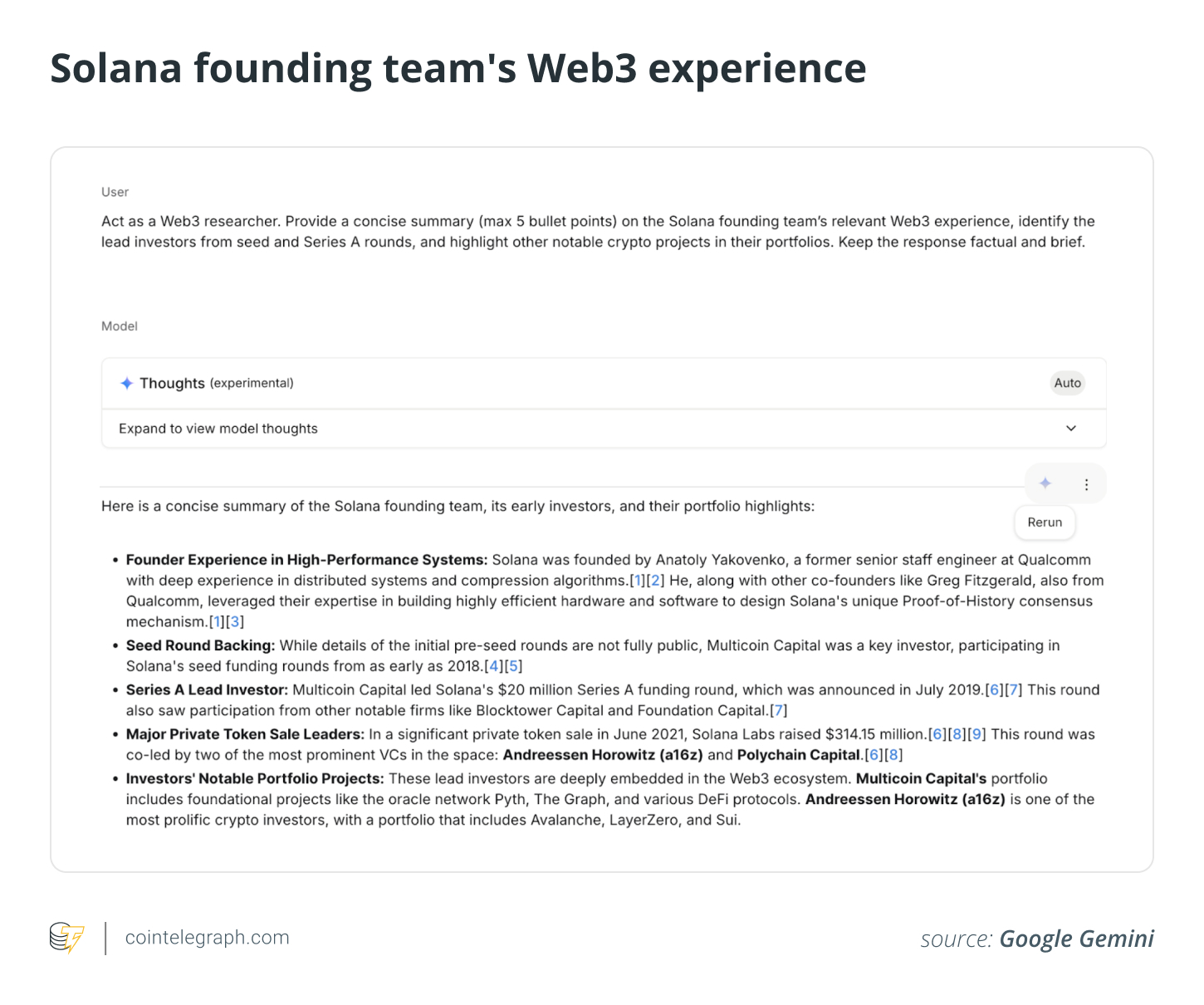
Part 2: Mapping the competitive landscape and social sentiment
No project operates in a vacuum. Its success depends on its position within the broader market and the sentiment of the community. Once you’ve established a baseline understanding of the project’s fundamentals, the next focus should be on these external factors.
“Act as a market intelligence analyst. Identify the top three competitors to the Ethereum Chain. Create a feature comparison matrix, evaluating them on transaction finality, developer ecosystem support, and network activity as of Q3 2025.”
-
Gauging market sentimentThe crypto market is profoundly influenced by narrative and social discourse. Following a successful testnet launch by Solana in September 2025, an investor would want to understand the market’s reaction. A relevant prompt could be:
“Analyze the public sentiment on X and crypto-focused subreddits regarding Solana’s most recent testnet deployment. Identify the main positive narratives being discussed, the key concerns raising criticism, and list 3-5 influential accounts driving the conversation.”
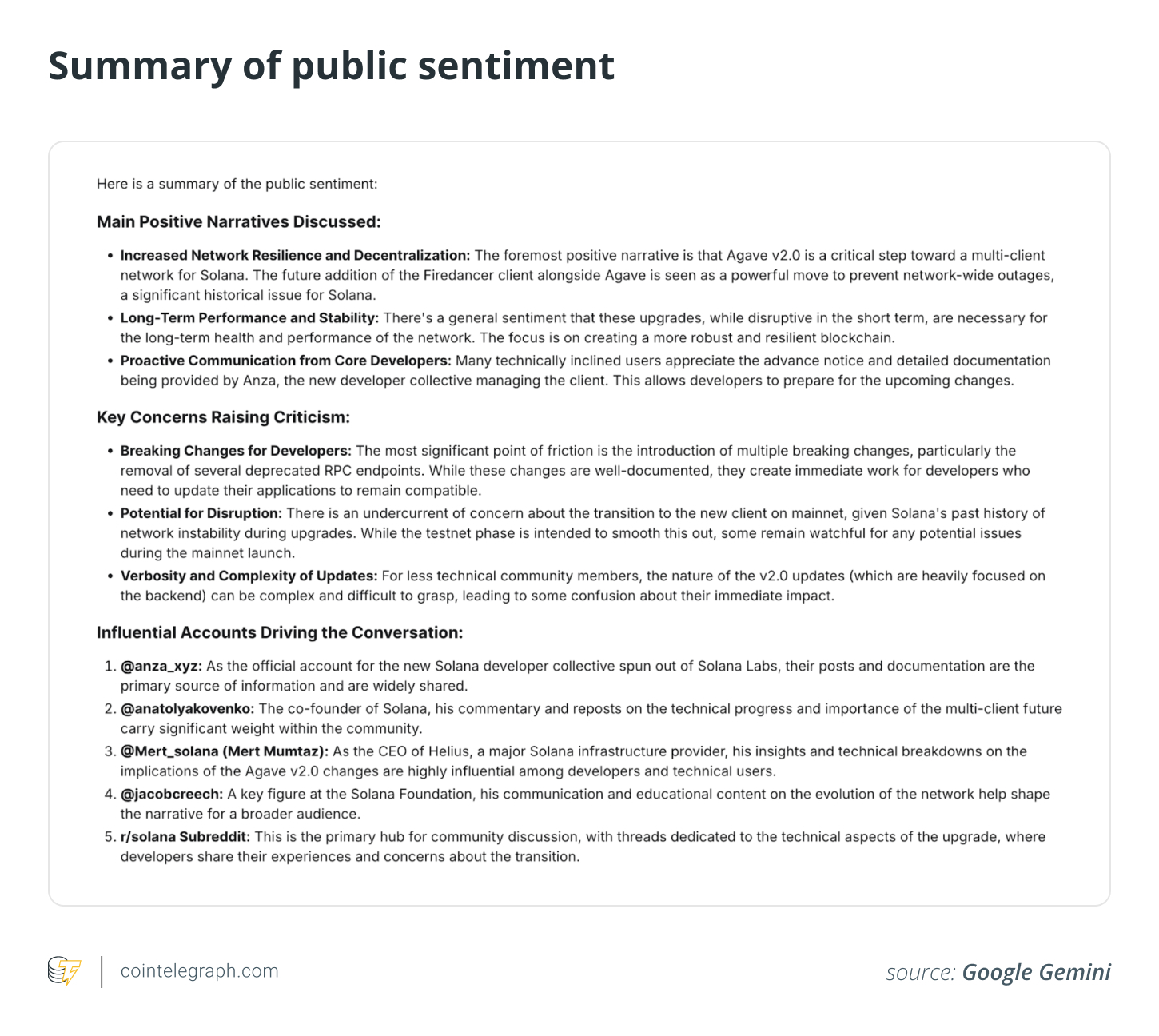
Part 3: Conducting advanced risk analysis
With the fundamentals and market positioning understood, a deeper analysis of risk factors and governance is necessary to form a complete investment thesis. Gemini can accelerate this process by summarizing complex and often overlooked documentation.
“Summarize the key findings from the security audit report for Solana conducted by [Reputable Audit Firm]. List any high-severity vulnerabilities identified and confirm whether the report states they were successfully remediated.”
“Based on global regulatory trends as of September 2025, analyze the potential regulatory risks for a project offering decentralized off-chain computation (similar to Solana). Focus on securities law and data privacy implications in major jurisdictions. Keep the answer in max 5 concise bullet points.”
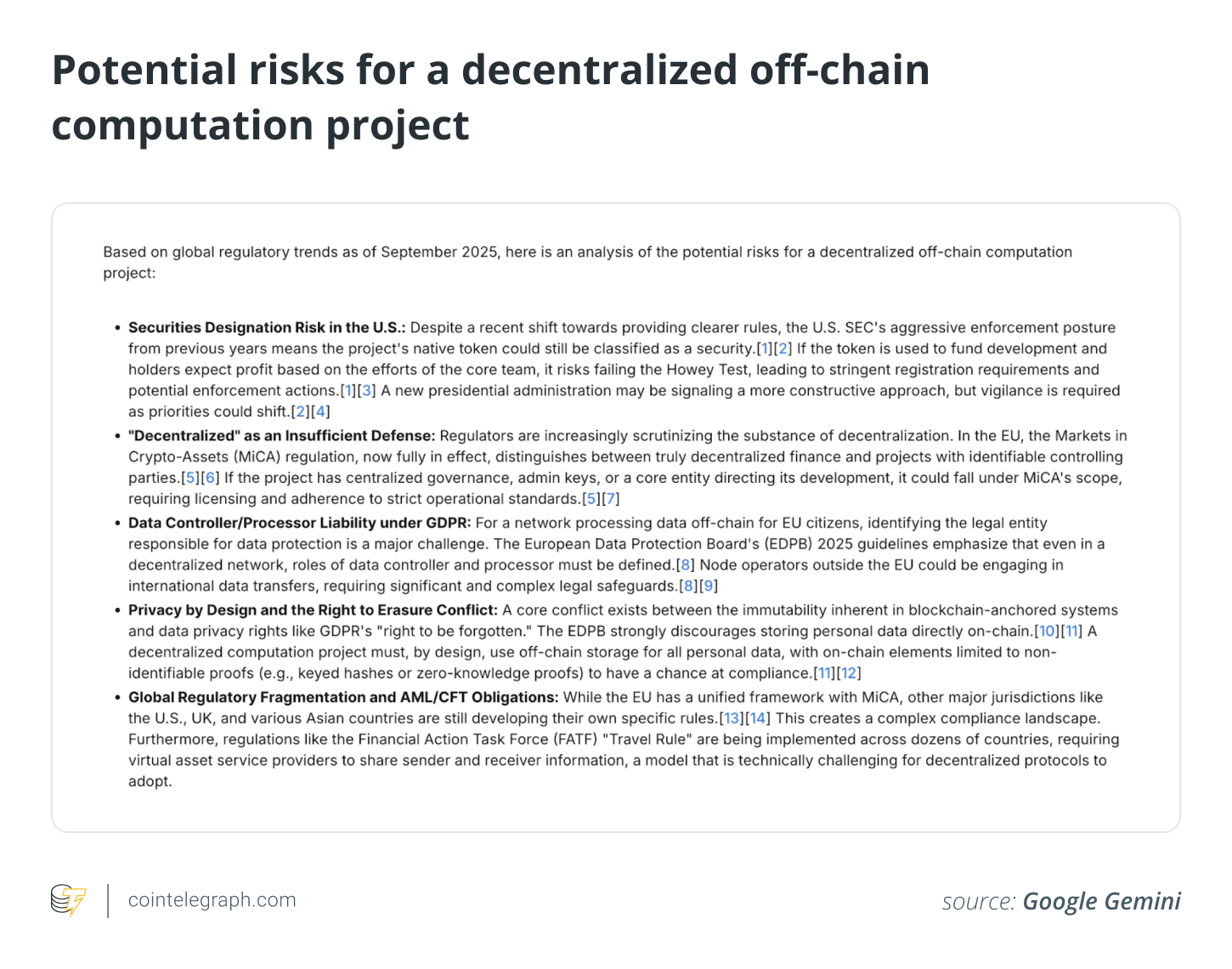
“Explain the on-chain governance model of Solana. Detail the proposal submission process, the token-weighted voting mechanism, and the quorum threshold required for proposals to be enacted. Keep the response concise and structured in no more than 5 bullet points.”
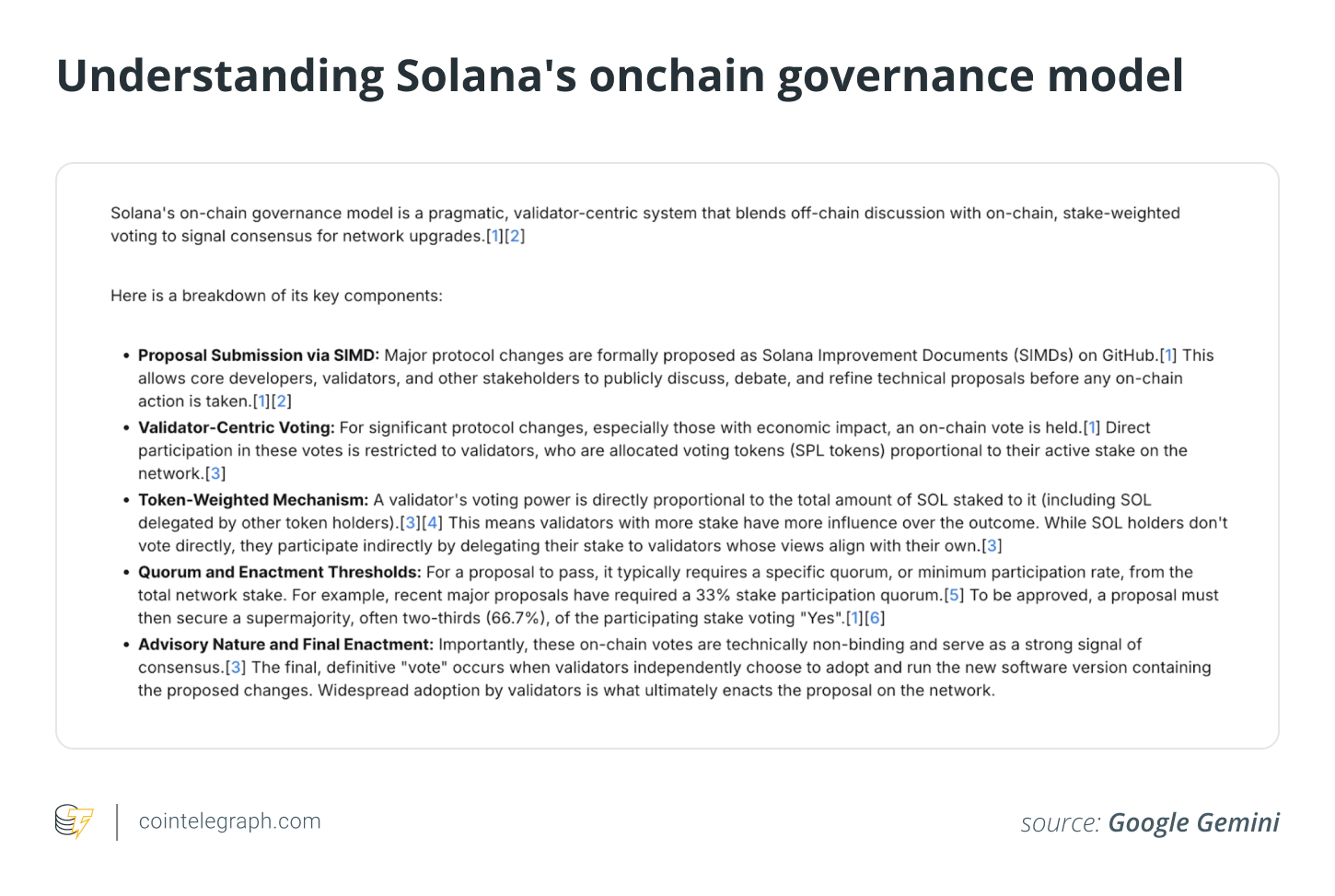
Risks and best practices when using AI for research
For all its analytical power, it’s important to recognize that Gemini is a tool for augmentation, not an infallible source of truth. Large language models can hallucinate and generate plausible but incorrect information. Therefore, the final and most important step in any AI-assisted research process is independent verification.
Treat Gemini’s output as a highly organized first draft. Any critical data points — such as token allocation percentages or partnership announcements — must be cross-referenced with primary sources like the official project website, white paper, audit reports, press releases or a blockchain explorer. The real advantage in this research paradigm comes from the synergy between machine-scale processing and human critical thinking.
This article does not contain investment advice or recommendations. Every investment and trading move involves risk, and readers should conduct their own research when making a decision.

